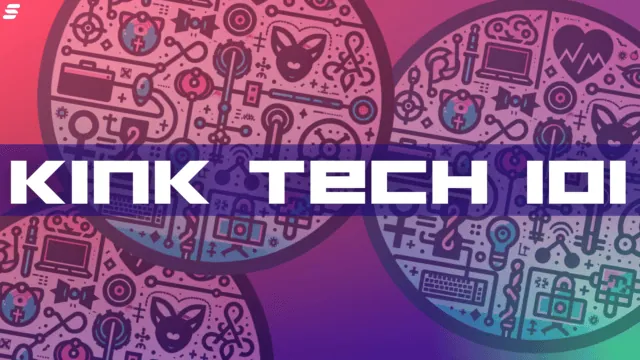When you think of vaginal health technology, what comes to mind? Perhaps it’s Kegel trainers or fertility apps. Yet, there is so much more that technology could do to maintain and enhance vaginal health in a market that is miles behind other health tech arenas.
With vaginal discomfort named as one of the most common reasons women seek healthcare advice, it’s interesting to find that over 50 percent lead to misdiagnosis and over 50 percent to recurrence.
Femtech startup Evvy goes on to add that 90 percent of vaginal health cases can be traced back to an imbalance in the vaginal microbiome. Yet, the number of “feminine hygiene products” that can disrupt the pH balance on the mainstream market is overwhelming and has been found to create a “harmful cycle” of negative symptoms.
Not to mention that 43 percent of sexual dysfunction in women features sexual pain, even though it takes up to seven to 10 years for patients to be diagnosed with gynaecologic issues such as endometriosis and PCOS thanks to a lack of funding for research.
It has been found that less than 2.5 percent of publicly funded research is dedicated solely to reproductive health, but according to menstrual health startup, Emm, one in three women will suffer from a reproductive or gynaecological health problem.
Considering all of this, it highlights a substantial need for more sex tech solutions in this field.
However, addressing these issues doesn’t come without challenges – including stigma, shame, and accessibility – inhibiting the technology from reaching its full potential in the mainstream market.
We spoke to a few experts, entrepreneurs, and even a “vagi-preneur”, to explore some of the technology that is being designed to support vaginal health and sexual well-being, and to help us understand the risks, barriers, and potential solutions for filling the fundamental gaps in this space.
Defining vaginal health tech
But first thing is first, what do we mean by ‘vaginal health tech’? While the terms ‘female genitals’ and ‘women’s health’ are commonplace, for clarity this article is referring to all people who have a vagina, whether that’s cis women, non-binary people, pre-op trans men, as well as post-op trans women.
This piece will primarily discuss technologies – specifically software and hardware – that can benefit people with reproductive and gynecologic vaginal health concerns.
And what do we mean by ‘vaginal health’? While referring to the physical health of the vagina as a distinct organ — the canal that connects the vulva to the cervix — vaginal health care is also used holistically to describe the overall well-being of the person connected to the vagina, along with their pleasure, sexual happiness, relationships, menstrual cycle, and fertility.

Progress in vaginal health technologies
Smart sex toys
As a sex tech publication, it would go amiss to talk about the benefits of sex toys on sexual health. For example, sexual pleasure can be essential for maintaining and enhancing health and well-being. Orgasms can help with sleep, stress relief, pain relief, and strengthening the immune system, as well as boosting sexual confidence and relationship satisfaction.
Smart sex toys — including vibrators that stimulate the vulva and vagina, such as clitoral toys, G-spot wands, and rabbits — can typically be controlled by a remote or app.
Lionness incorporates AI technology to track orgasmic contractions, which can be a measure of how your body works and changes over time, such as after a period of strengthening the pelvic floor.
Kegel trainers
Smart kegel trainers are specially designed to strengthen the pelvic floor muscles, offering a range of sexual health benefits for the vagina, such as for those struggling with urinary incontinence and pelvic organ prolapses, including during and after pregnancy. This is particularly important when we learn that one in three women suffer from pelvic floor issues.
Exercise can also make sex more pleasurable by improving sensation by sending more blood flow and lubrication to the vagina, as well as making orgasms feel stronger and longer.
Kegel devices like the Elvie, Perifit, and Emy, each have a companion app to help gamify the process while the device is inserted into the vagina for strength training.

Smart underwear
Pelvic floor training typically comes in the form of an app and a toy, but there have been other non-invasive technologies that can help assist with vaginal health for people who might not want to stick technology in their vagina.
Carinwear Smart Underwear uses an app and an embedded sensor to help people track leaks and offer personalized strength training exercises for their pelvic floor muscles to recover from urine leaks.
Similarly, Labella was proposed at a human-computer conference in 2016, conceptually designed to educate people about their personal vulva anatomy through an app and a small camera integrated inside the garment. Through this intimate software, users would be guided to contract their pelvic floor muscles accurately.
Smart underwear has also been designed with other areas of vaginal health in mind, such as Gi Tomasello’s invention. ALMA Smart Underwear was conceptualized to connect people more intimately with their vagina’s microbiome and pH balance.
Challenging the mainstream market of “feminine hygiene products”, Tomasello incorporated a sensor that monitors different biomarkers of vaginal fluid to help people develop a deeper understanding of their flora and empowers them to prevent vaginal infections that are unique to their bodies.
Sex education apps
Education is a crucial piece of the puzzle when it comes to vaginal health tech in a society that represses this knowledge. A 2010 study found that “people who have enough information to enjoy their sex life to the full are significantly more likely to be satisfied with many aspects of their sex life.” As well as a 2021 study that explains “sexual education received in adolescence may increase sexual self-efficacy, which in turn, may increase sexual satisfaction.”
Sex education apps, such as Quinky, seek to close the gap of knowledge left by a lack of comprehensive sex education in mainstream institutions. Incorporating accessible information for young people about reproductive anatomy and shame-free pleasure education helps people look after their bodies and genitals in a responsible and informed way.

Menstrual health apps
Over the monthly cycle, the vagina will go through a series of hormonally induced changes; the cervix changes position, and there are a variety of cervical fluids and shades of period blood, all of which can help determine the health of the vagina.
Menstrual health practitioner, Danielle Keiser, is particularly excited about the innovation “that is using menstrual blood as a biomarker for testing and potentially screening” for health irregularities.
Using menstrual tracking apps “can help orient us to where we are at in our menstrual cycles. This is helpful because our hormones are constantly in flux,” and she adds the symptoms that “may come along with it is helpful for health monitoring and thus potentially helping diagnose any menstrual conditions or disorders, such as endometriosis, PCOS, uterine fibroids, or other maladies associated with heavy menstrual bleeding.”
Menstrual health apps have been revolutionary for people in tracking their cycles, which not only “helps individuals monitor their fertility but also enables better understanding of hormonal changes, promoting overall reproductive health,” contributes Colette Courtion, founder of Joylux which offers digital tools for menopausal, vaginal, and sexual health issues.
Tracking hormonal symptoms can benefit someone’s overall well-being, making it helpful for “organizing your life, i.e., work, scheduling, dating, fitness, routines, optimal nutrition, and most importantly, sleep and rest,” emphasizes Keiser.
Vaginal rejuvenation devices
Courtion is particularly knowledgeable about the area of vaginal health, having created her own vaginal health devices, in particular, the Issviva x Joylux, a vaginal rejuvenation device that uses a “combination of light energy from red and infrared light-emitting diodes (LEDs), thermal heat, and therapeutic vibration to help rebuild collagen to improve vaginal tissue laxity.”
Clinical studies reveal that of the women using the device three times a week for six weeks:
- 77 percent saw an improvement in sexual function
- 90 percent saw increased sensitivity
- 92 percent saw a dramatic improvement in symptoms like urinary distress and incontinence
- 55 percent no longer had any stress incontinence.
Wearable fertility trackers
Electronic fertility devices often measure body temperature using under-the-tongue thermometers, or Apple watch-synced smart rings like Natural Cycle’s Ouraring. However, the OvuSense wearable has been designed to be worn intravaginally and overnight to measure the temperature. This helps people track their ovulation up to 24 hours in advance to maximize the chance of getting pregnant.
With its compatible app, you can input other essential information, such as “the supplements you’re taking, your period, when you have sex, your cervical secretions, diagnostic tests, and any medications” to create a full picture of your fertility health.
Kegg fertility tracker measures the cervical fluid for ovulation and doubles up as a kegel trainer. It doesn’t need to be worn overnight and claims to take just two minutes to complete its analysis and directly upload data to its free compatible app.
It explains that “cervical fluid is the key to understanding your fertility,” this is because “sperm cannot survive in the female reproductive tract without fertile cervical fluid to nourish and sustain them on the journey to the egg. Cervical fluid is a better predictor of fertility than urine tests, calendar calculations, or temperature tracking alone because it’s unique, like you.”
Risks and concerns within vaginal health tech
Health & safety
Gigi Engle, a certified sex and relationship psychotherapist and sex expert at the LGBTQIA+ dating app, Taimi, shares that while social media can be a great tool for dispelling myths around sexual health information, “there are also a lot of people perpetuating incorrect information” creating products like supplements, vaginal steamers, and yoni eggs, “designed to sell people the idea of vaginal health without have any science to back it up – and in some cases, they can actually be harmful for sexual health.”
These products are often rooted in “purity culture wrapped up in shiny capitalist wrapping paper – selling products that are designed to cleanse your vagina or impurities or energies of past partners – all of this is shame-based and medically meaningless,” says Engle.
However, there are some “great apps out that are specifically designed to help with vaginal health” and do help educate people that messing with pH balance can trigger infections such as BV.
Bias & exclusion
In one study on bias in AI for women’s health, it was found that “the models performed highest for white women and lowest for Asian women,” said Parker, an assistant professor of bioengineering. “This tells us machine learning methods are not treating ethnic groups equally well.”
This is further alarming amidst a culture whereby Black women are 3.7 times more likely than their white counterparts to be at risk of mortality during childbirth and within the first year. Their pain is most likely to be dismissed by doctors, so technological innovation is needed to include and prioritize their well-being, not reinforce this figure.
Furthermore, the lack of inclusive vaginal health care for trans and non-binary individuals adds to the risk of excluding communities from accessing relevant resources and therefore trans-inclusive research and tech initiatives that could also lead to vaginal health issues such as this 2023 study that looked at the vaginal microbiome of natal vaginas and neovaginas.
Data & privacy
Concerns around the use of any technology and our data are prevalent considering the negative impact of dating app data leaks. This becomes increasingly unsettling when we add particular intimate data that concerns sexual health, for example in countries where abortion has been made illegal.
For years now, people have been using menstrual health apps, inputting data such as when they had sex; if they’ve used contraception; and if their period is late.
In the report Missed period? The significance of period-tracking applications in a post-Roe America, researchers Bridget G. Kelly and Maniza Habibb explain that “when abortion is illegal, seemingly harmless digital data could potentially become criminal evidence. The concern is that health data stored in period-tracking apps could be used to infer whether the user has had an abortion in order to prosecute them in states where abortion is now banned.”
In 2022, the Organisation for the Review of Care and Health Apps (ORCHA), found that, of the top 25 used menstrual health apps, “84 percent of the apps allowed the sharing of personal and sensitive health data beyond the developer’s system, with third parties.”
Keiser shares her concerns regarding the privacy and security of this information “especially in the case of the now overturned Roe V. Wade decision in the United States. Troublingly, we’ve seen a few cases already take precedence, where information given to an app was ascertained by a regional jurisdiction, effectively using that information against a woman implying that they must’ve had an abortion.”
Nevertheless, Keiser says that we are also seeing many apps tighten their data privacy and security policies “to ensure that they are protecting their users and customers as much as they can.”
For example, the Flo app, says Keiser, “also implemented an optional anonymous mode to ensure that their data is non-identifiable.”
Additionally, OvuSense assures its users that “data security is the highest priority, your data is stored in an encrypted format in the cloud meaning it is secure and cannot be deciphered. The cloud database we use complies with strict regulatory guidelines which include security management to the ISO 27001 standard and personal data protection to the ISO 27018 standard.”

Barriers & solutions for vaginal health tech
High-tech barriers
Despite viable vaginal health tech innovations, barriers that inhibit them from entering the mainstream market have consequences on the health of around half the population.
We spoke with Gi Tomasello, bio-hacker and founder of Almara Futura, who designed the wearable technology ALMA Smart Underwear. She told SEXTECHGUIDE that she made the intentional decision to pivot from high-tech to low-tech because society is just not ready to have this kind of high-tech vaginal health product.
Aside from Daye’s tampon which is sent off to a lab facility, there are no hardware devices on the market that deal with the vaginal microbiome instantaneously. While fertility dominates the femtech market, “the reality is that the taboo [around vaginal microbiome] is everywhere,” she asserts that “if we were to develop this, I know it will not be accessible, so what is the point?”
Low-tech solutions
Her concern with wanting this to be accessible is a primary goal, and her initiative solution is to work “more with self-gynecology” with the hope of “self-exploration consciousness raising” using practices from the 70s to help spread on-the-ground awareness, build confidence, and dispel these shame-led taboos.
While some of us may be lucky enough to have access to the pharmacy, doctors, and gynecologists, a large portion of the world don’t, she adds that “most of the time when we have symptoms, we are even not able to recognize vaginal infections from urine infections, to transmitted disease.”
So, the first necessary step is to help people understand “which type of prevention I can take or treatments I can follow; do I need to take a test or not?”
Her solution of open sourcing and teaching workshops “where we facilitate how to look at yourself and how to look at your cervix, what you can recognize, how to use the spectrum, how to make your own lubricants.” Redistributing the information so people can take responsibility for their bodies. Teaching people to trust their own “senses from the smelling, the feeling of your fluid and then being aware of everything.”
Shame-led barriers
Shame plays a huge part in blocking innovation in this industry when eight years ago, French TV satirically advertized a “smart tampon” called Pusshy, making light of vaginal health and verging on sexist tropes around menstruation.
In the ad, it says “everyone knows that each 28 days, Women are becoming more… unpredictable. But… how could you warn your friends and family that at this time? … Pusshy connects and synchronizes to Vagicloud and provides personal reports directly on your smartphone.”
Since then, some real-life smart menstrual products have attempted to make it to market, including the smart menstrual cup, Loon Cu fundraised $160,000 to “help users track their menstrual fluid volume and color, and provide an alert”. It however disappeared in 2019 after announcing that it received its FDA approval. Emm tried to do the same, closing investments of around $1 million in 2022 for its moon cup.
Home-testing solutions
Finally, in 2024, we have solutions such as Daye – a “real” smart tampon. The company initially launched its debut product, a CBD tampon, in 2020, to ease cramps. Its latest product is starting to bring the conversation of the microbiome to mainstream attention.
Akin to the popular STI home-testing kits, the Daye smart tampon is inserted and shipped to the lab, where it goes through PCR (Polymerase Chain Reaction) technologies.
According to Daye, “these have revolutionized the screening and diagnosis of sexually transmitted infections (STIs) and vaginal infections, exemplifying a remarkable level of sophistication in molecular diagnostics. Unlike traditional methods that rely on culturing microorganisms, which can be time-consuming and less sensitive, PCR enables the detection of even trace amounts of genetic material from STI-causing pathogens.”
Daye explains that this “high sensitivity allows for early and accurate identification of infections, reducing the risk of complications and transmission. Furthermore, PCR-based STI screening can simultaneously detect multiple pathogens in a single sample, streamlining the diagnostic process.”
Moving the testing into the safety and comfort of one’s home helps to eliminate the barriers of shame that block people from going for checkups at the doctor.

Financial barriers
Considering the cost-of-living crisis, whereby period poverty is leaving people to use “socks and newspapers as sanitary products”.
Widespread access to these products are common barrier in this area, and Courtion shares that she was frustrated by the lack of effective and affordable solutions, and so took her “experience as a medical aesthetic entrepreneur,” she partnered with Dr. Sarah de la Torre, Ob-Gyn, “to create a line of products” that people could access.
We’re still in the early stages of development, and Rachel Braun Scherl argues that to influence change, we need more businesses to be on board with vaginal health. For example, the conversation around mental health was brought on by businesses realizing the profit gains of keeping people well as opposed to letting them struggle with anxiety or depression and taking sick days.
When it comes to menopause, Scherl argues, businesses are not yet acknowledging the financial benefits that could help shift attitudes.
Women-led solutions
Challenges in mainstream healthcare are arguably fuelled by devices and products that are still designed by men. Keiser explains that this means a lot is missing in the design process. “Women should be at the center of leading and testing these products no matter what, and the men should be assisting, helping, and using their skills to support the female engineers and designers.”
Some interesting products she’s seen include redesigned speculums, Orchid and Nella, which make women’s comfort a priority, and Evvy, which is a “great start-up that addresses and analyzes bacterial vaginosis.”
Filling the gaps for the future of vagina health tech
What Keiser hopes for the future of this market is “more information, education, and communication in the public sphere.” Breaking taboos is necessary “to orient the market and build the field, and only then can people start to take action to remedy whatever their problem might be.”
She predicts a lot more customization and personalization as well where vaginal microbiomes are tested. She’s not far off, as there is vagina organ chip technology that is being developed to show “a preclinical model of human vagina-microbiome interactions, which could potentially be used for discovery and assessment of potential microbiome-based therapeutics.”
When looking toward the future for creating technology for vaginas health, Daye hopes to develop solutions for under-served gynecological health conditions like endometriosis, PCOS, and menopause. “Within the next five years, we will build an ecosystem where every woman can understand, monitor, and improve her health from her smartphone.”
Considering that tracking wearables are commonplace in today’s society, with the likes of smartwatches and rings, when the time is right and stigma and shame aren’t so commonplace, more devices that seamlessly integrate with daily life may become more prevalent. These could monitor various aspects of vaginal health, offering real-time data for users and healthcare professionals to analyze and make more responsible decisions.
Taking this further with virtual reality and artificial intelligence, tech that is already looking to offer solutions for other areas of health could be likely. For example, VR and AI for treating insertion phobia for people with vaginismus. Vaginismus “is characterized by phobic anxiety associated with vaginal insertion” and is difficult to treat “given high levels of avoidance that present barriers to patients complying with recommended vaginal insert exercises. Yet, allowing people to explore in the safety of their homes with personalized guidance may offer support.
Conclusion
When it comes to developing solutions within vaginal health tech, these solutions needn’t further isolate populations who are in need, including the trans community and Black women. This could mean having more diverse innovators be given opportunities and tackling global access barriers.
While there are plenty of technological solutions that either exist or are in development, what we need for larger cultural change is a shift in the conversation that overcomes stigma and places the power in the hands of the user to bring these products into the everyday.









Leave a Reply